Chapter 12: Sticks and Bonds
One of the funny things about stick figures is that they are somewhat accurate. Our arms and legs and hands and feet and fingers and toes are like sticks – more like stick chains. I remember playing endlessly with a carpenter’s rule (figure) – a chain of sticks with swivel joints between them. The carpenters rule differs from many parts of the human stick chains in the joints – the joints in the carpenter’s rule only allow one dimension of motion (one angle, so the entire chain must stay in the plane. Humans of course have several ball and socket joints – two degrees of freedom – which allows us to move out of the plane, and do important things like catch Frisbees, and more importantly, play Twister.

For those unfamiliar with Twister, it is played on a large vinyl mat with rows of colored disks on the mat. A spinner is spun, and it might point to something like “right hand, yellow”, in which case the players would have to place their right hands on a yellow disk. The spinner is spun again, giving another command, say “left foot, red”, and so on. The object of the game is to not be the one who fell first, or who could not complete the command. The difficulty is in the constraints presented by the other players, and your own current position, since you were only allowed to move the extremity called (say, right hand). The players end up tangled about one another, and tangled with themselves. In general, when the tangling becomes too complex, a reach to a disk becomes impossible and someone, perhaps the entire tangle, collapses.
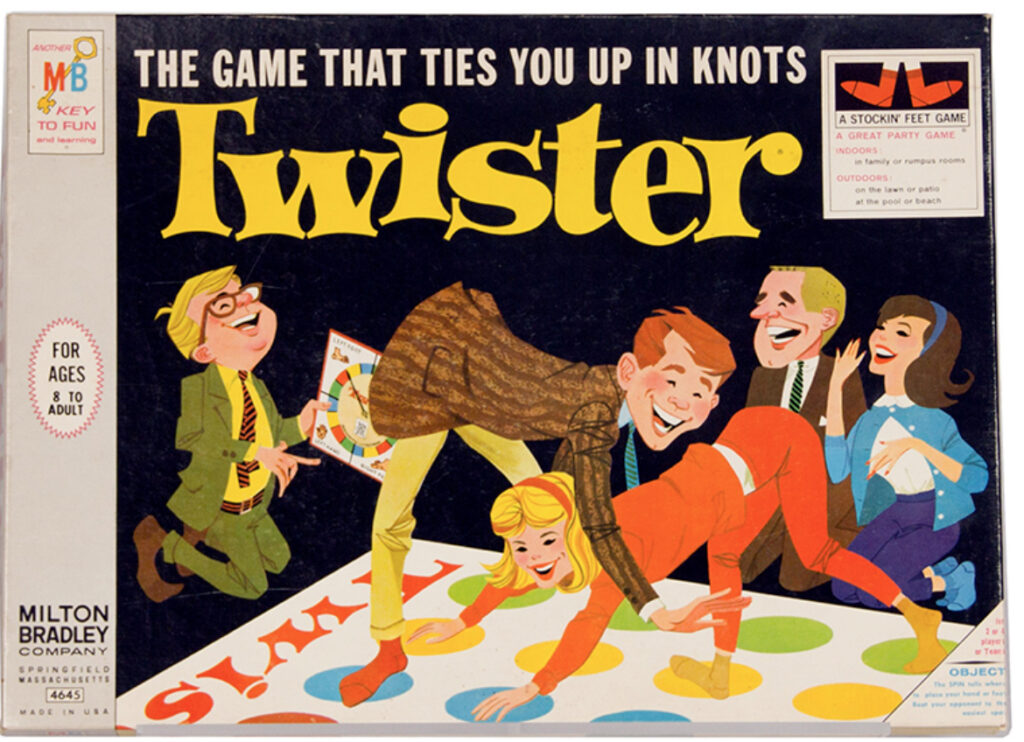
Twister was lots of fun when I was young. And now we would like to play theoretical Twister. Our basic question is: given a stick chain, with ball and chain joints, which entanglement patterns are possible? It seems like, given an unlimited number of sticks in the chain, we ought to be able to make any given entanglement pattern. So maybe the better question is: given a particular number of sticks in the chain, which patterns are possible? Or, to consider the other direction, given a knot or link or other entanglement pattern, how many sticks are required to make it?

We have to first decide whether the sticks have to be of equal length or not. And we have to decide whether the sticks have any thickness to them. Finally, we need to decide the nature of the ball joints, the vertices where the sticks meet. Can the sticks meet at any angle, or is the angle limited somehow? In chemistry this is called the bond angle, and molecules are built from atoms (the vertices) with bonds (the sticks) joining them. We can start off with the least restrictive problem: the sticks can be any length, they can meet in any angle, they are infinitely thin, and they can only intersect at vertices. The minimum number of sticks required to tie the knot in this universe is called the stick number of the knot. If we require all the sticks to be the same length, then we are looking for the equilateral stick number. Then by construction we can see that the stick number of the unknot is 3. The stick number of the trefoil is 6. The stick number of the figure eight is 7, and the stick number of both 5sub1 and 5sub2 is 8. In each of these cases we have found a configuration that exhibits both the stick number and the crossing number. Can this always be done?
There is a simple proof that the stick number of the trefoil cannot be less than six, say five. Let a five-stick loop be your candidate conformation, for example the stick star to the right. Look at your conformation from a viewpoint where one of the sticks points directly at your eye – meaning that that stick appears to be a point. An example for the stick star is to the right. Then the remaining sticks appear to you to form a four stick loop in the plane, but try as you might I think you will find that you cannot make a four stick loop in the plane that has three crossings (if you do send it to me), which is of course how many crossings you need for the trefoil. This proof is due to __. Note that with a five stick loop in the plane you can even get five crossings (as with the stick star, but you can’t tie a closed knot.
In general it is hard to prove that you have discovered a stick number. It is often straightforward to show that a stick number is at most a particular number – you do this by exhibiting a conformation that realizes the knot with some number of sticks – once you have done this you know the stick number cannot be larger than this number.
Along these lines, you can see that the stick number of a product is at most the sum of the stick numbers plus two. Simply tie the two knots with the minimum number of sticks, place them near each other, then open each knot slightly at an edge or a vertex, then use two more to make the product (sum).
One way to find upper bounds on stick numbers is to generate lots of stick knot conformations, randomly, by computer, and then check to see which knot-type they are. If you tie a given knot this way with, say, nine sticks, then you know the stick number for the knot is at most nine. If we want them to look better, we can then pick the minimum stick representatives and minimize the energy on them. This method, first employed by Rob Scharein, resulted in the pictures here – see the chapters on random knots and energies.
For some applications, for example protein folding, what we would like is some sort of thick stick calculation. For example, consider the equilateral conformation that gives us that the equilateral stick number of the trefoil is six. There is very little wiggle room in this conformation. Perhaps what we would like here is a two number description – a stick number and a wiggle number. One version of the wiggle number would be the maximum cylinder ratio that can realize the knot with that many sticks. And so the complete story for any knot would be these sets of pairs. Of course we would expect that the greater the number of sticks, the fatter they can be.
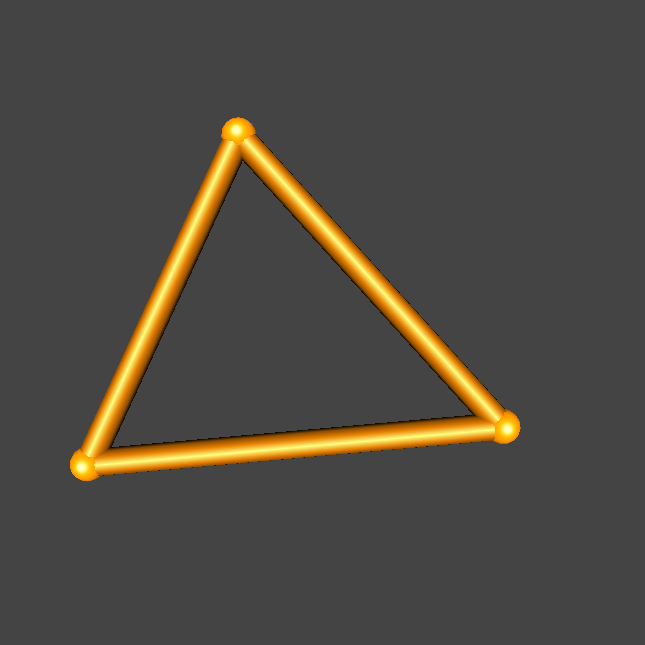
The unknot
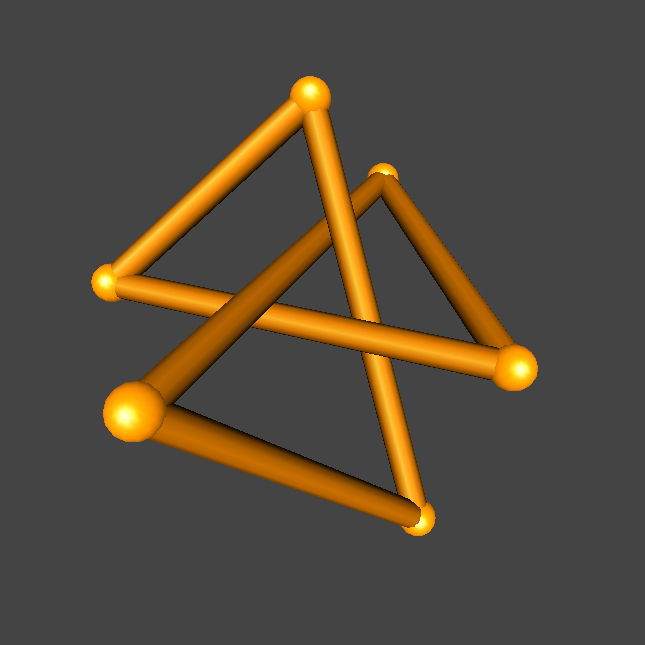
The Trefoil
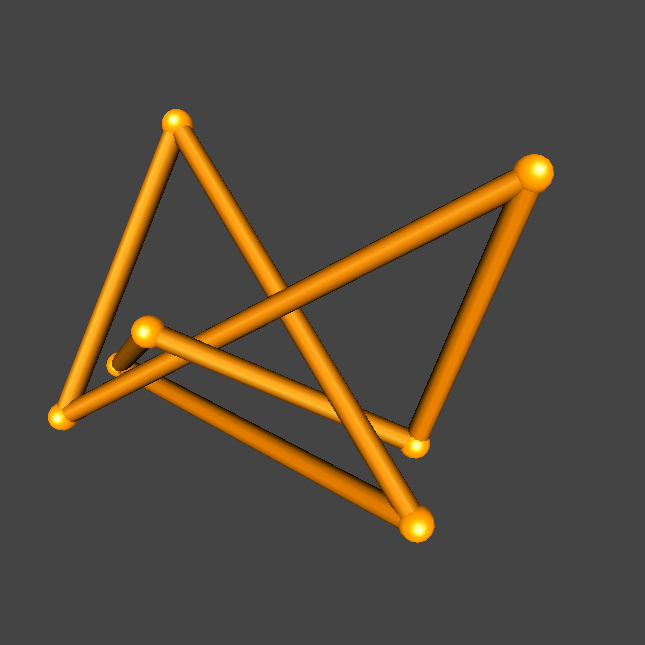
Figure Eight
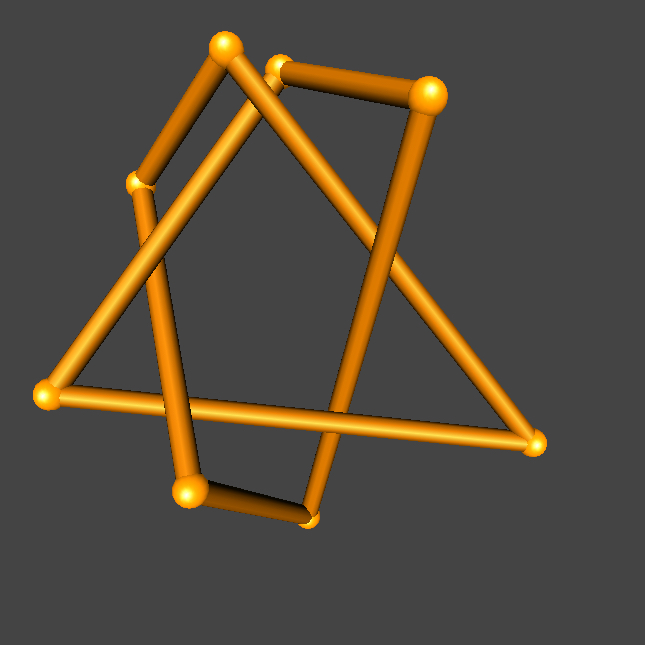
5sub1, the Star Knot

5sub2
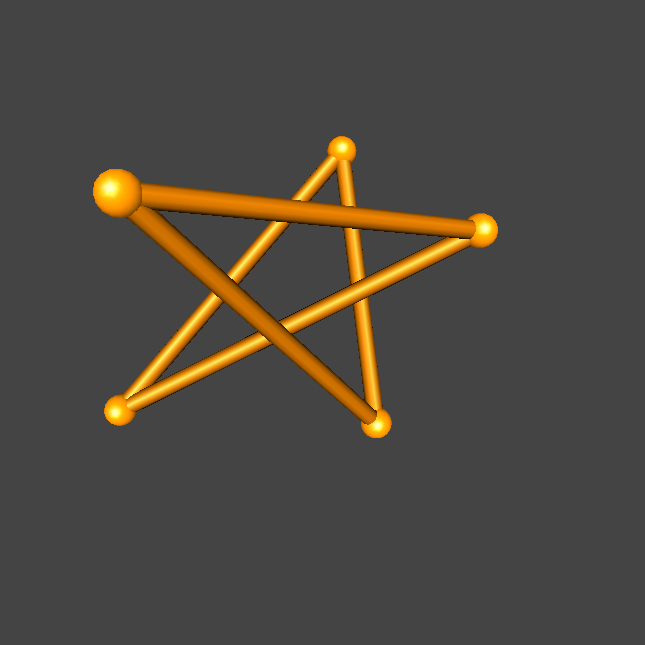
Five stick unknot
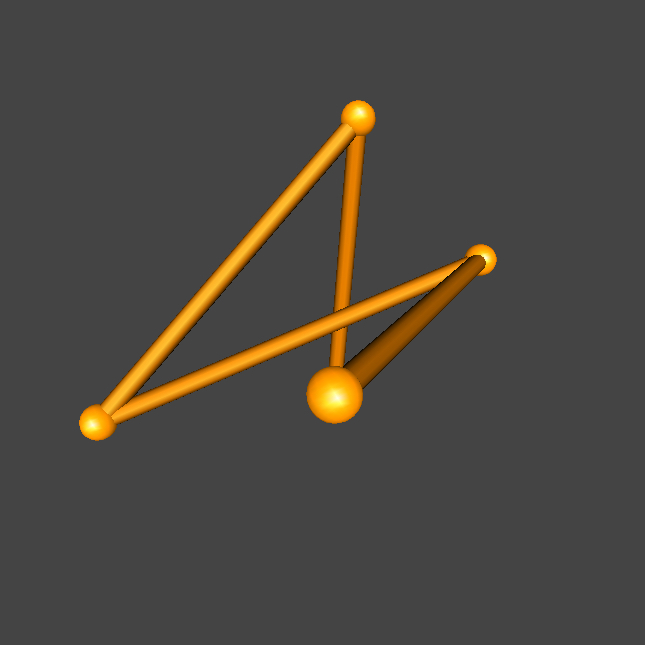
Looking down an edge of a five stick unknot
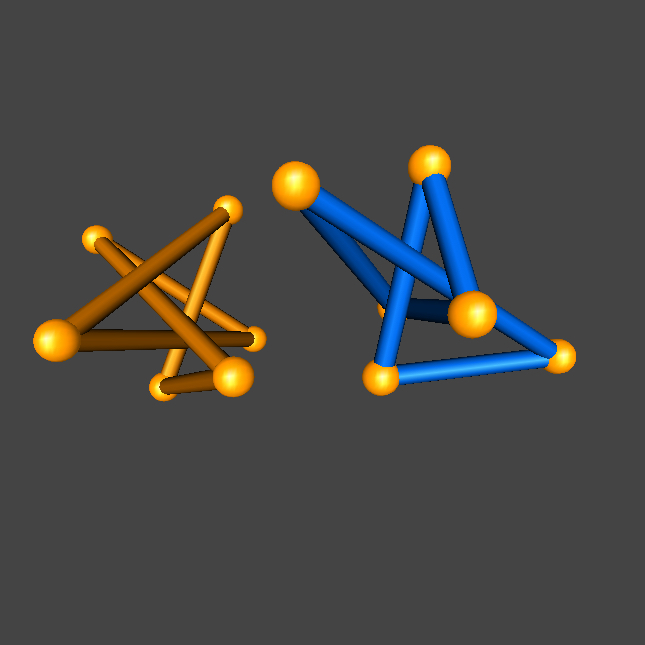
Two trefoils

Product of two trefoils
A more restrictive possibility is to determine the bond angles. In particular, we could require that there exactly two possible angles: 90 degrees, and 180 degrees (no turn at all). If we further require that the edges all have unit length, then we are constructing the knot or link on the cubic lattice, which we can think of as a sort of 3D graph paper, where space marked off into cubes as graph paper divides the plane into squares. The knot exists only along the edges of the cubes — no diagonals.
The stick number of the trefoil on the cubic lattice is 24. The example to the right is minimal in this sense.

An unknot on the cubic lattice
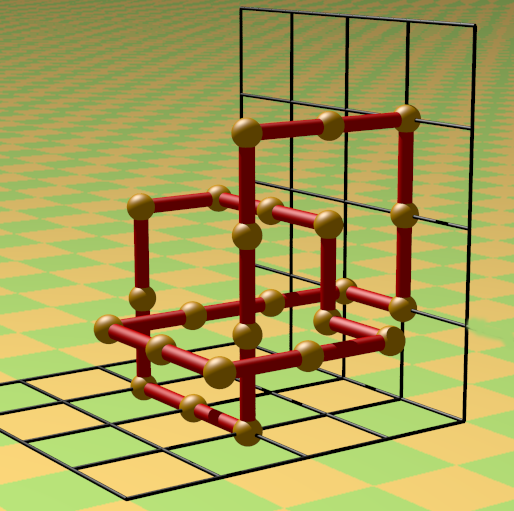
A trefoil on the cubic lattice
The cubic lattice keeps the sticks from being too close to one another, except where they meet at ends. And where a corner is turned it is a right angle. This means we can fit a tube of diameter 1 around the knot on the cubic lattice, and the tube will not intersect itself. The center curve of this tube will be a little shorter than the number of sticks, because it will round at the corners. Therefore we can use the stick number on the cubic lattice as an upper bound on the ropelength of the knot or link. We can see this with the simple link.
In Chapter 8 we found that the precise ropelength of the simple link is 4 Pi, approximately 12.5. On the cubic lattice 16 sticks are required, giving 16 as an upper bound. We can see that the tube on the cubic lattice requires the extra length to make the more rectangular loops.
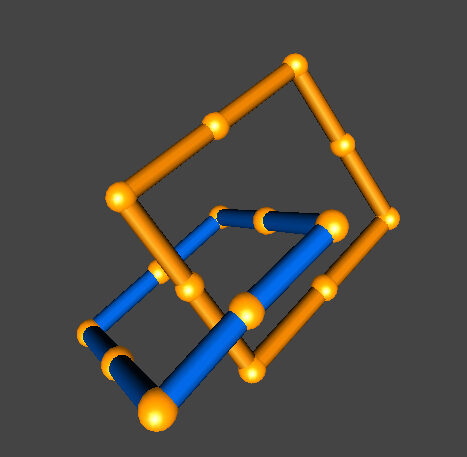
Simple link on the cubic lattice
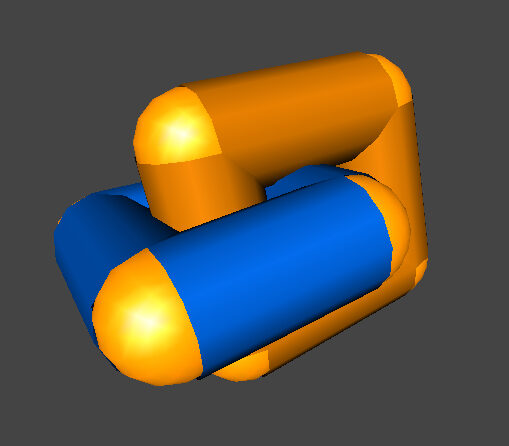
Tubes of diameter 1 about the cubic lattice simple link

Ropelength minimum for the simple link

Tube trefoil following minimal trefoil on the cubic lattice.
In Chapter 8, we saw that there could be conformations that were local minimums for tying length, that is, you could make the knot with less rope, but first you had to lengthen the rope to do it. So let’s say the tying length of this conformation is 50. And let’s imagine we live in the universe of all possible unknot loops with tying length 50. So both the local minimum and the serpentine loop to the right are in this universe. However one cannot, in the universe, get from the minimum to the serpentine loop, because in this universe all loops are length 50 and no longer. On the other hand, one could clearly move the serpentine loop into a circle of tying length 50. So our universe is divided into at least two states that are isolated from each other. Now we could tie a trefoil with tying length 50, but we could not change a trefoil into the unknot without cutting the loop, so that trefoil lives in yet a different state in our universe.
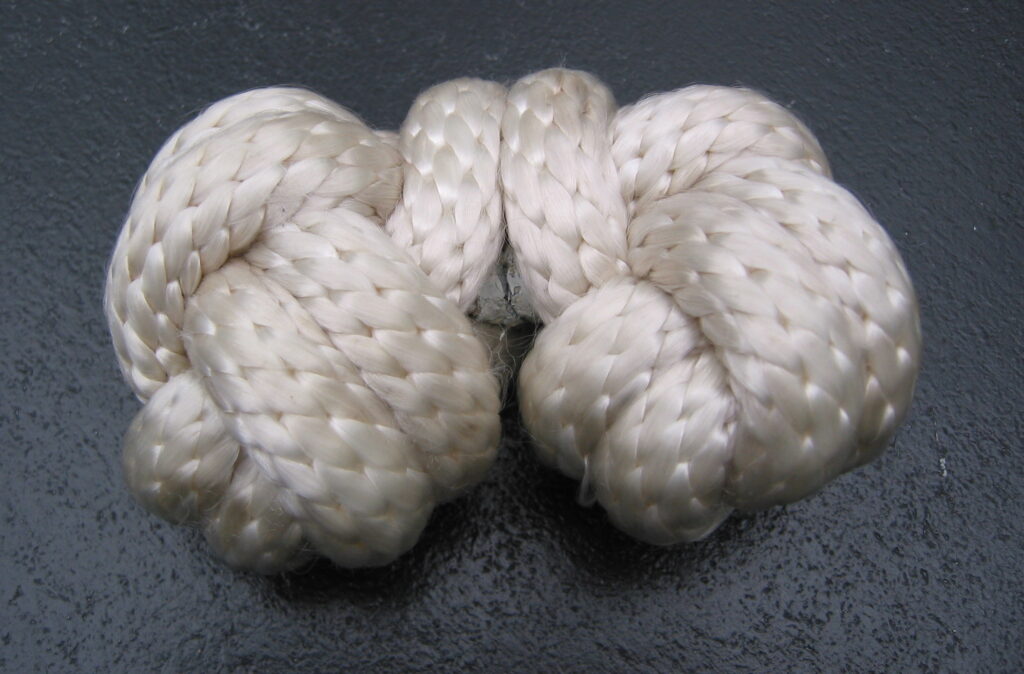
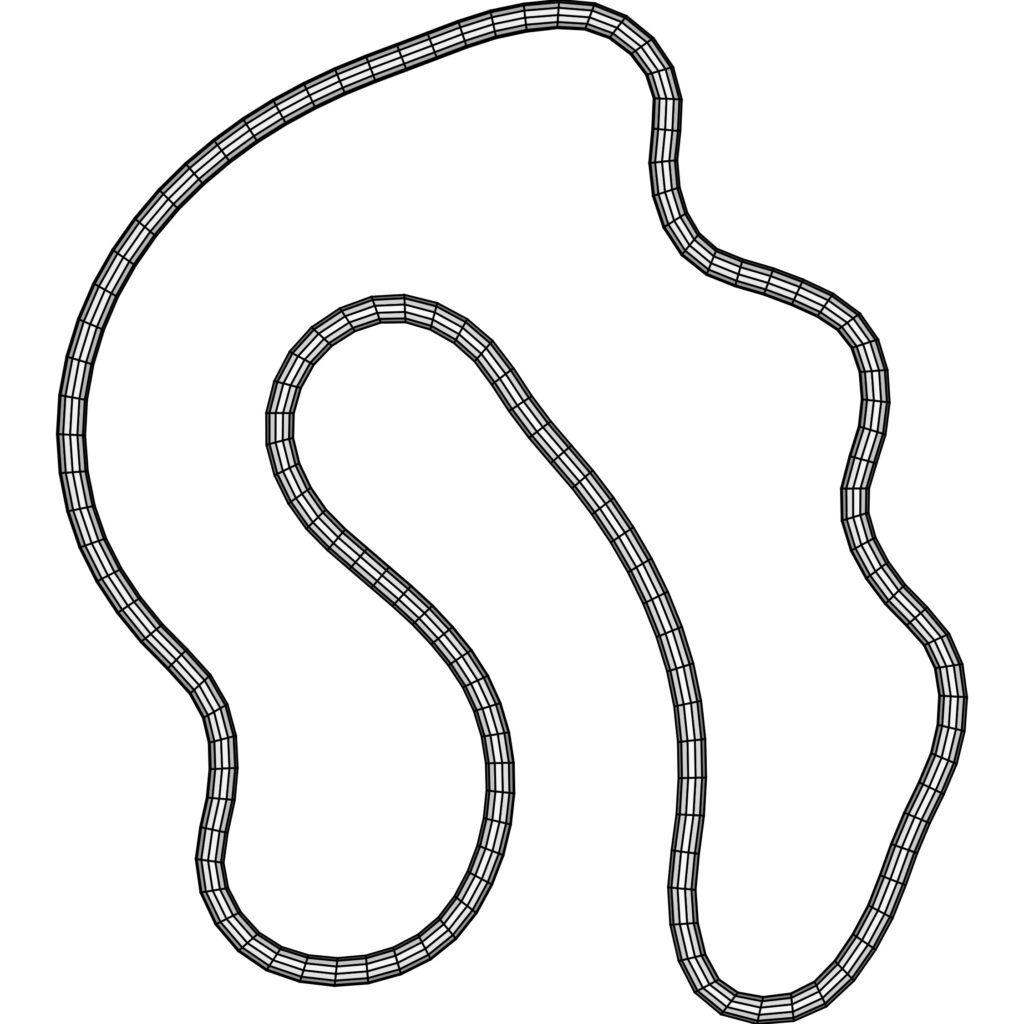
The game of Twister depended on the fact that the players would sometime be asked to contort themselves into positions that they found impossible. In our language of knot universes, we would say that the tangle state the players were in is not path connected to the state they are being asked to go to. In some contexts this is called geometrical frustration. There are puzzles, sometimes called tavern puzzles, in which the essence of the puzzle is that there appear to be two isolated countries in the puzzle world, and you can’t get from one to the other. The trick is that they are in fact connected, but by a narrow, hard to find route.
Here (first stick picture right) is a configuration that is frustrated – the blue square cannot be removed though it is not linked. If we allow flexibility at the joints (bond angle can change), while keeping sticks fixed length (this is typical for arms, including human ones), the frustration remains, because the large triangles cannot get any thinner without changes to edge length (picture 1). However, if we add a joint to one of the triangles, it becomes a flexible quadrilateral and can be narrowed, and the blue polygon can slip off.
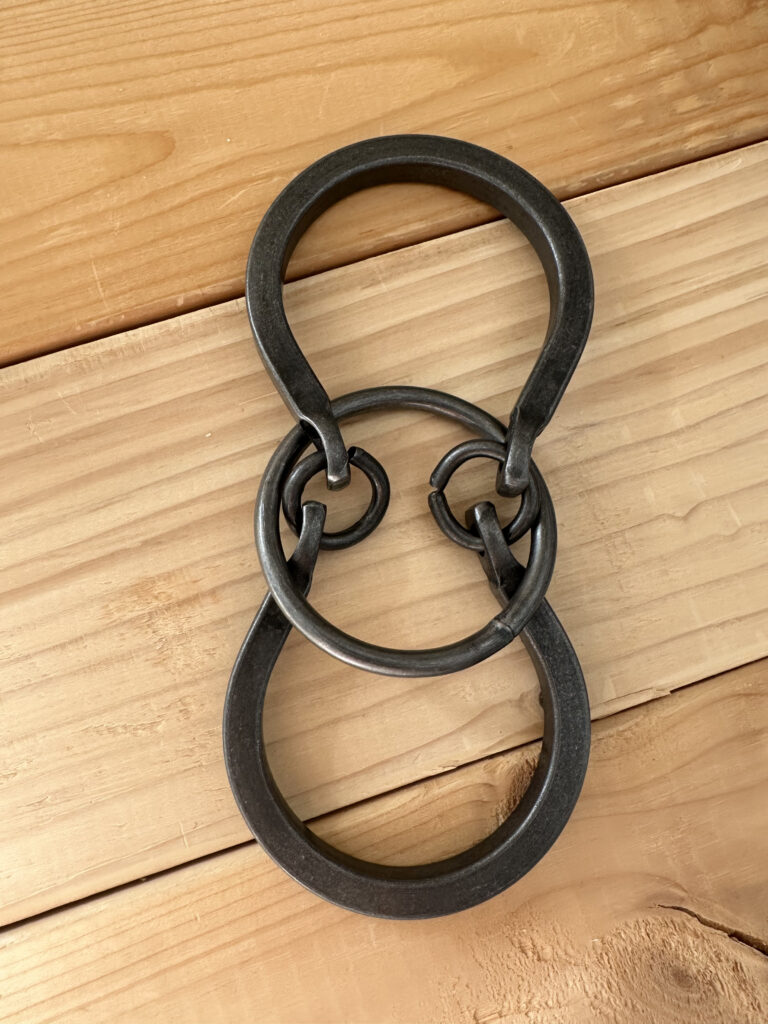

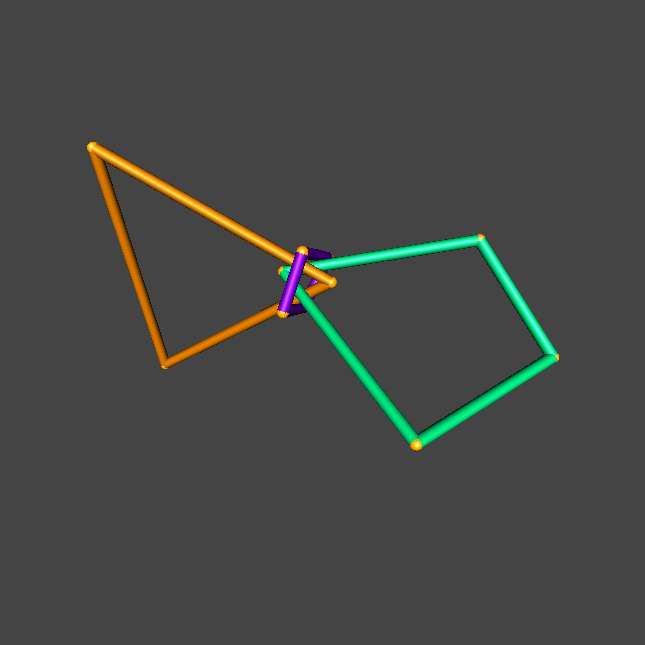
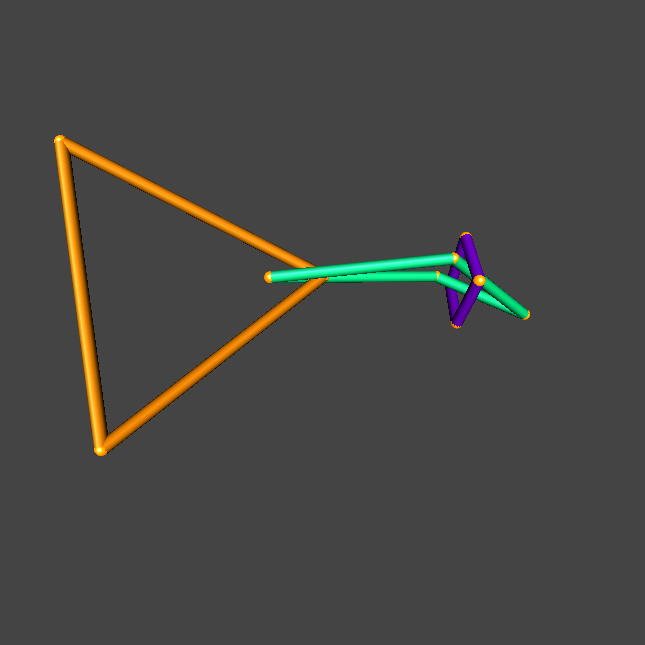
Putting the knots on the cubic lattice is a way of discretizing our topological problem of tangling. The braid codes of Chapter 1 were another kind of discretization. When we are dealing with continuous curves there are infinite possibilities with any length curve. Discretizations let us start off with a finite number of possibilities.
Another sort of discretization of tangling designs is tiling. Here we have a way of creating planar diagrams. There is a very old practice of using tiles with path designs to make decorative tangling patterns. The Zellige tiling of Morocco is an especially rich tradition.
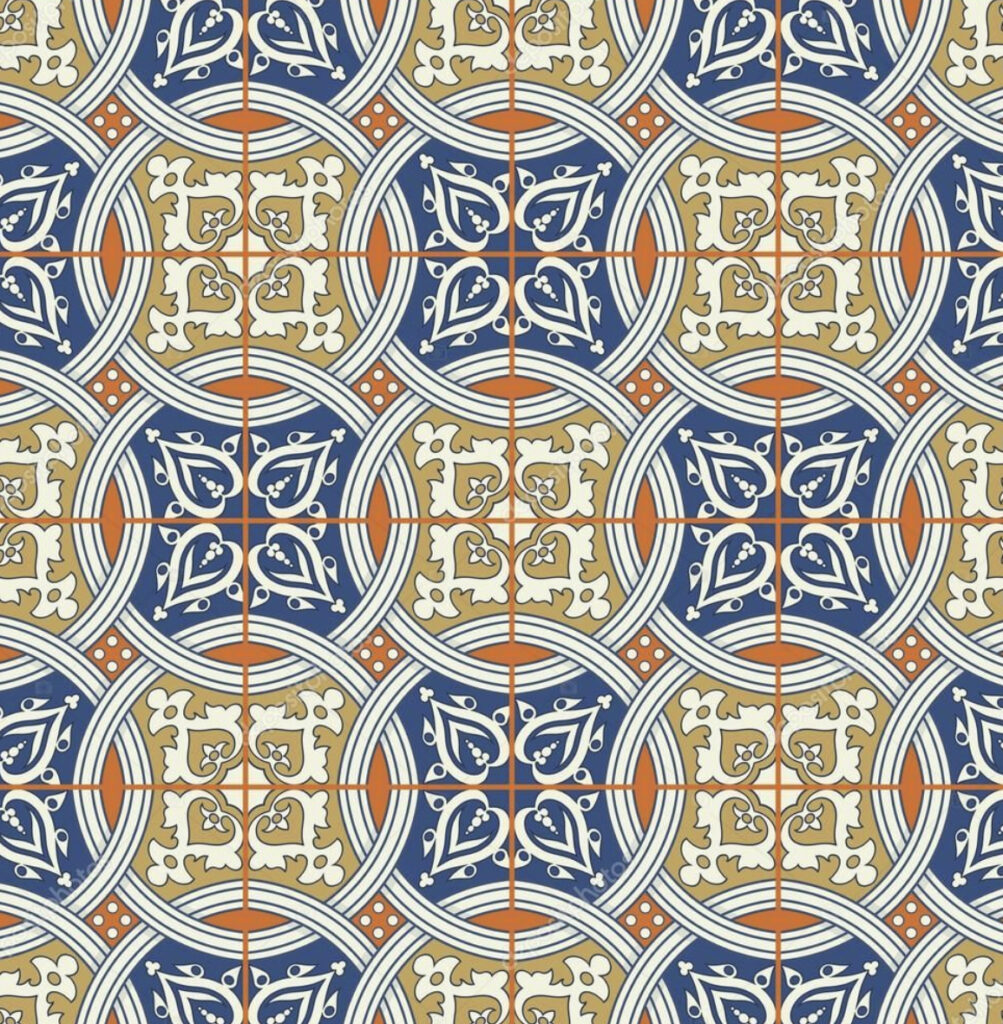

Two Moroccan tiling patterns
A mathematical approach to tiling is to choose a finite number of basic tiles, and ask what sorts of patterns can be made out of finite sets of these tiles. There are two natural choices for the underlying lattice, the hexagonal lattice and the square lattice, that is, hexagons or squares are natural choices for tile shape. For a given set of tiles, the tile number for a knot or link is the minimum number of tiles from that set it takes to make the knot or link.
For square tiles a possible set is below.
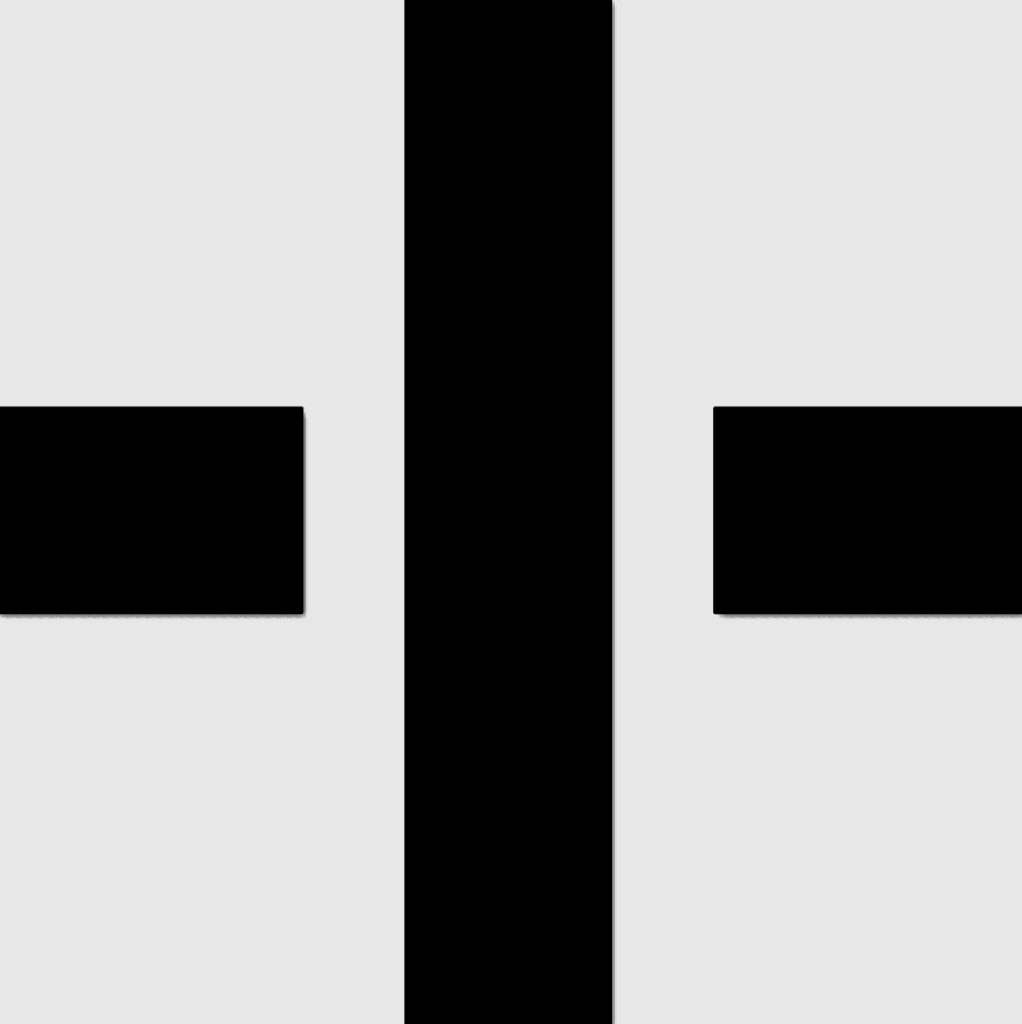
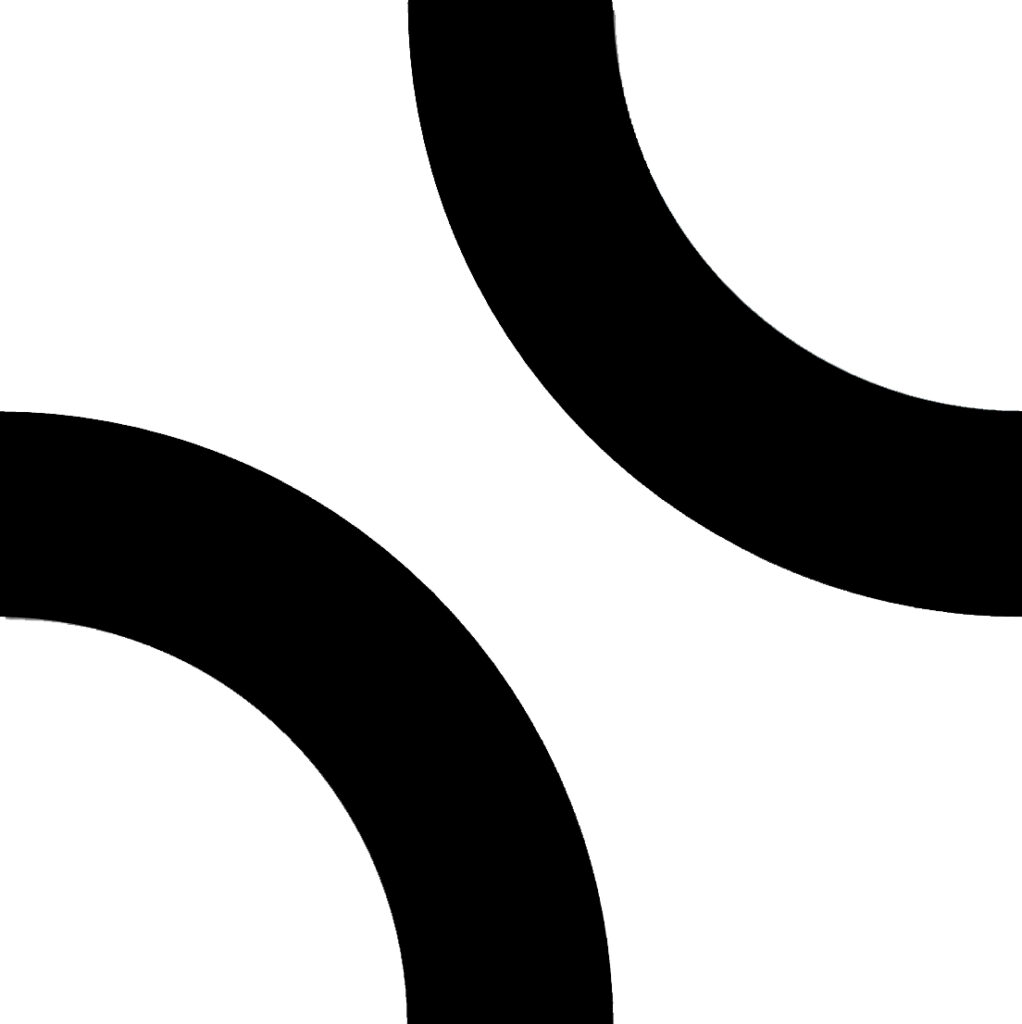
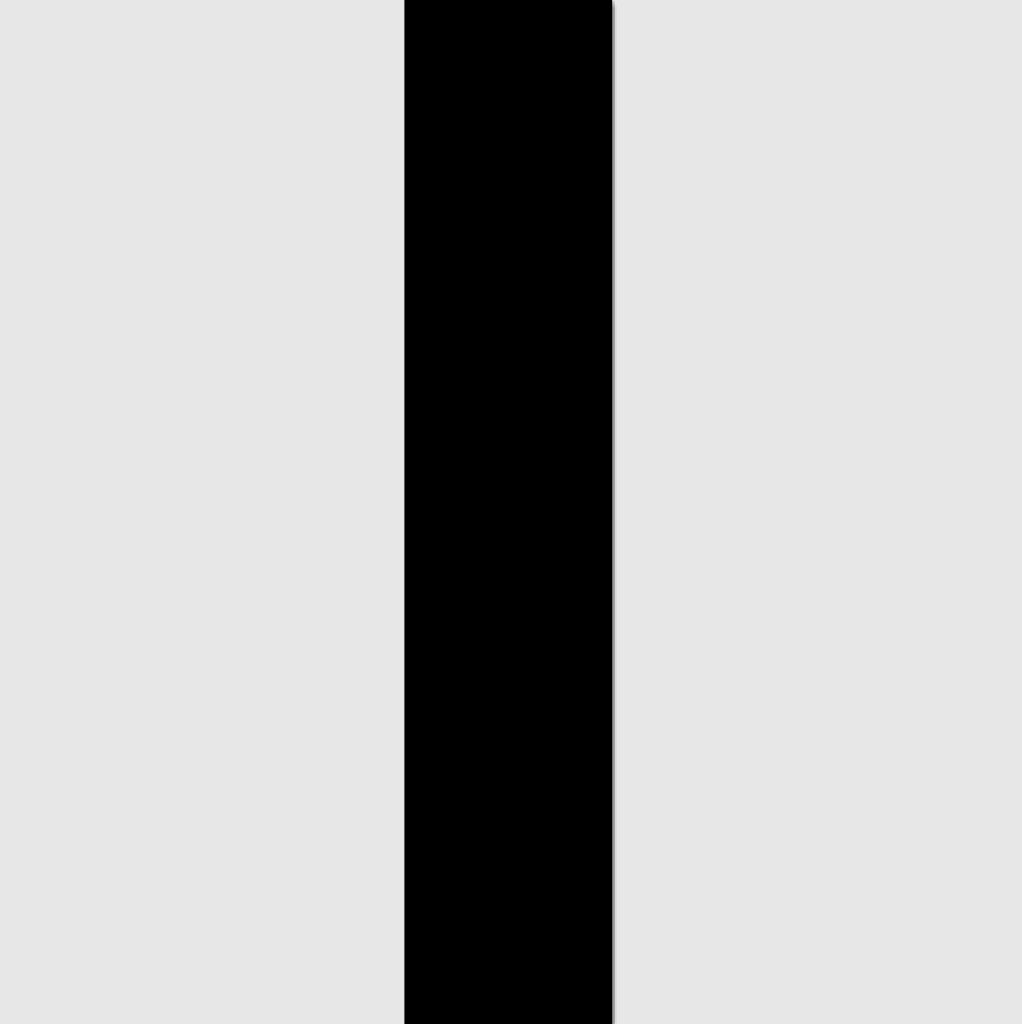

Here are some knots made with these tiles. No claim is made that these are minimal square tile numbers, but of course by construction they are upper bounds. Note that we only employed the first two tile designs from above — these two are all that is required if we don’t mind some stray curve segments that are not part of the knot.

Trefoil 19 tiles
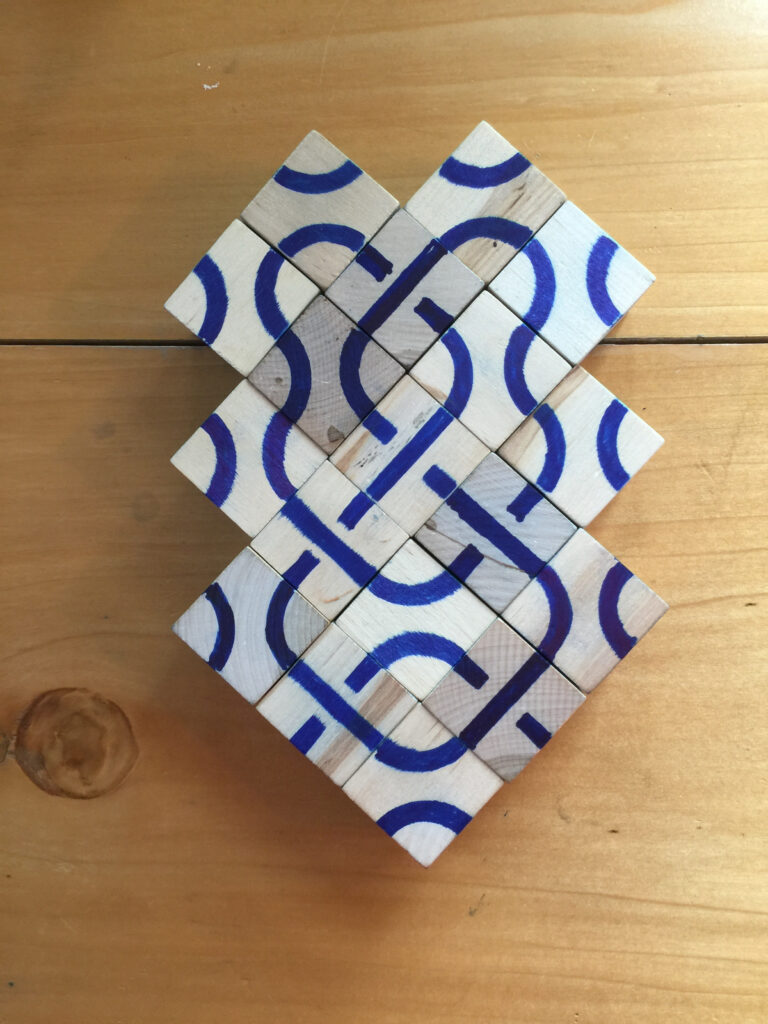
Figure Eight 18 tiles
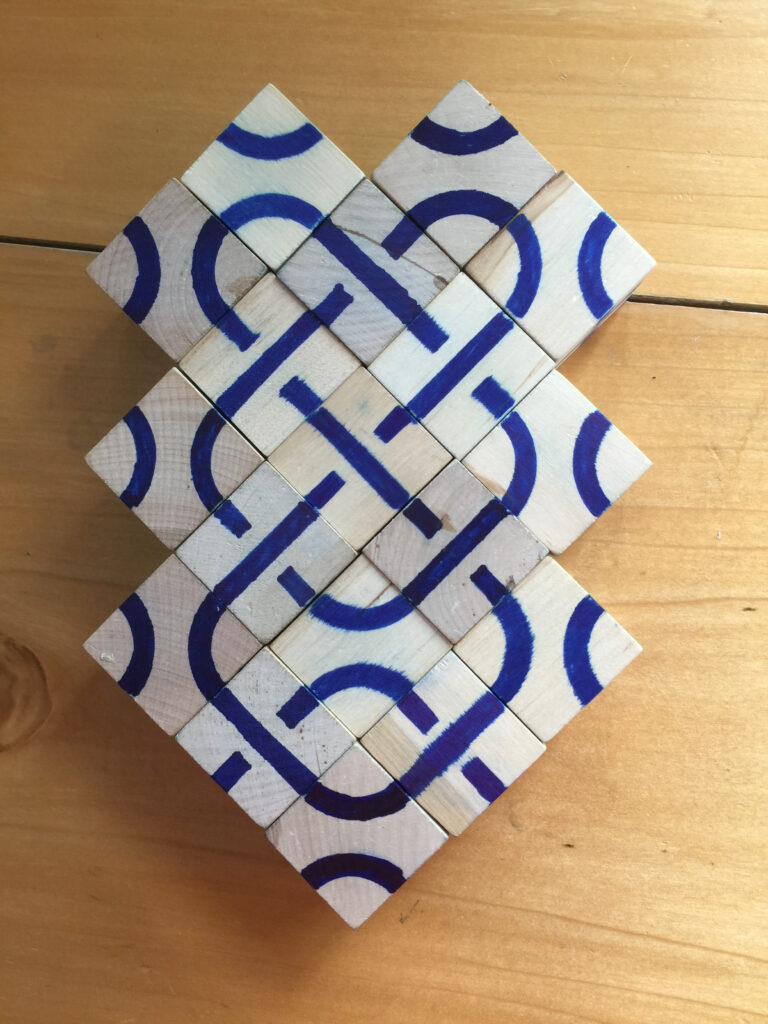
Six sub Two 18 tiles
Hexagonal tiles can give us more options for curves and crossings, giving us perhaps more natural patterns. The tradeoff is that a natural set of tiles is larger. One such set is all the tiles with at most one crossing on a single tile.
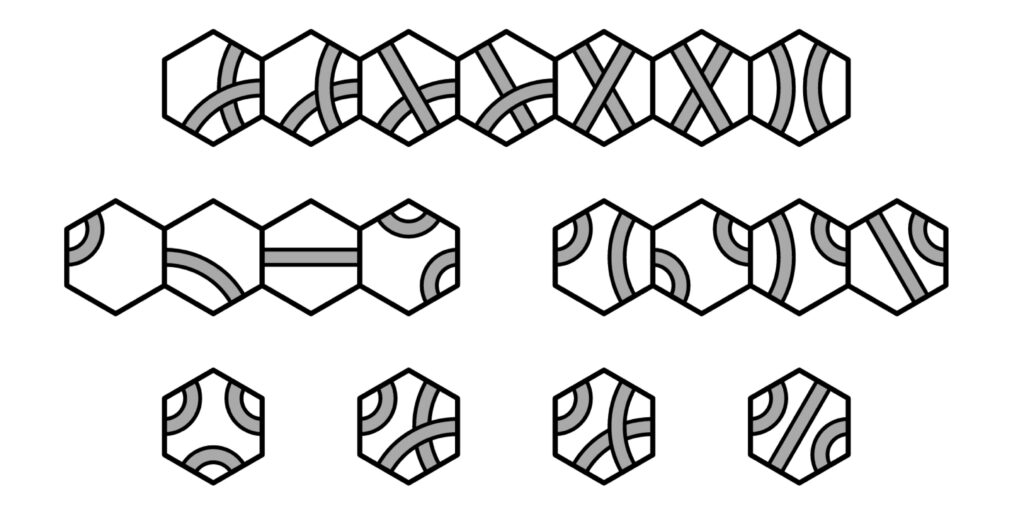
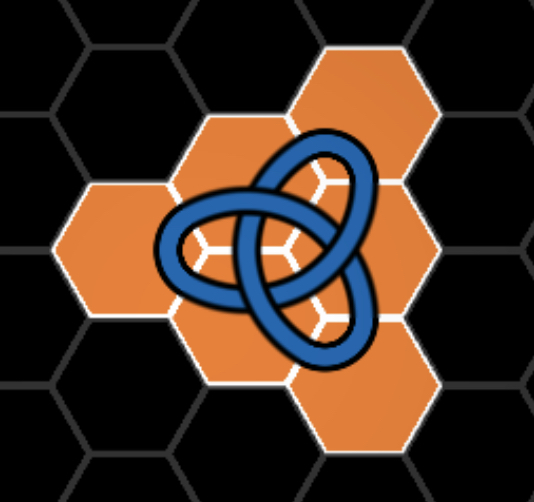
Trefoil 6 tiles

Figure Eight 11 tiles
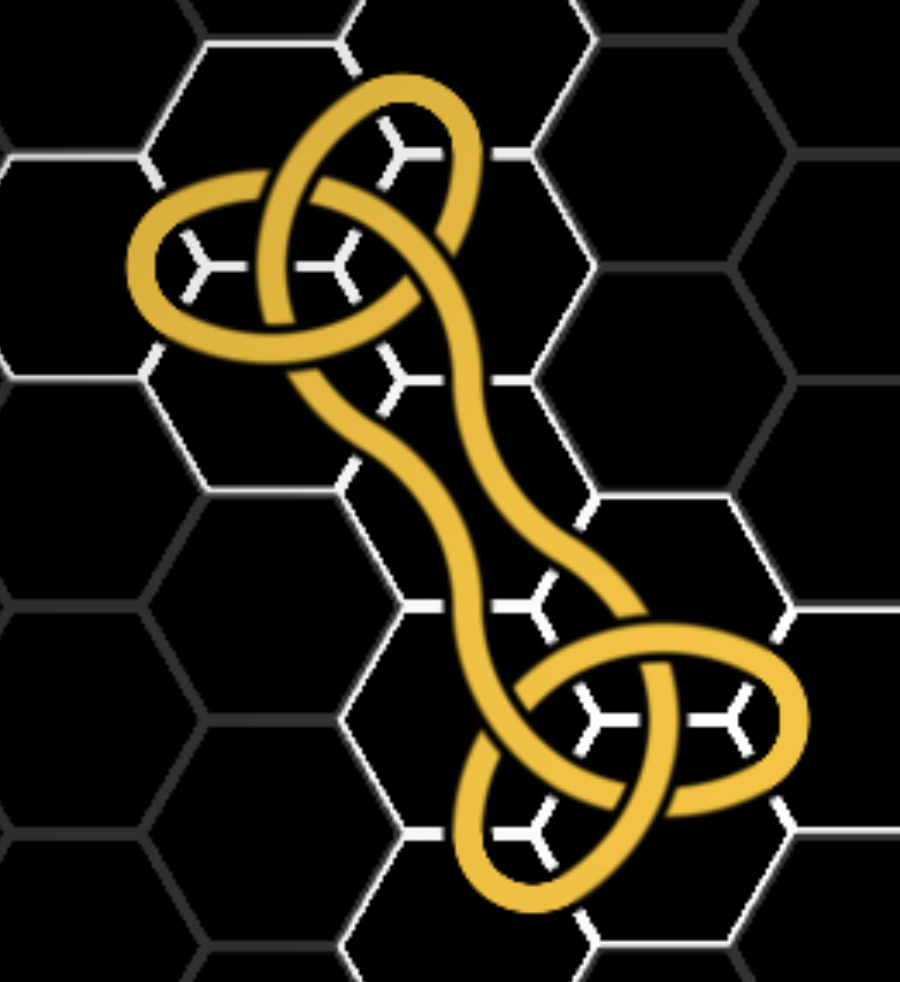
Product of Trefoils 11 tiles

Borromean Rings 12 tiles